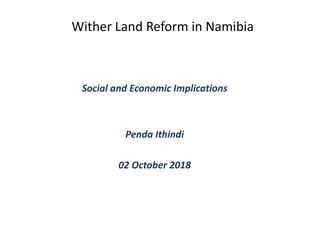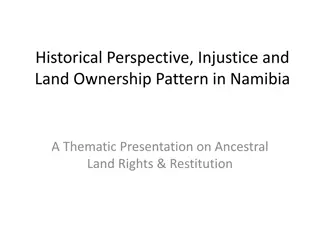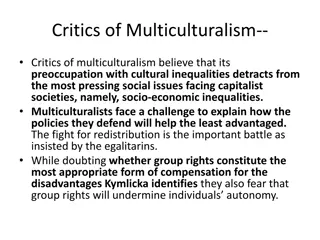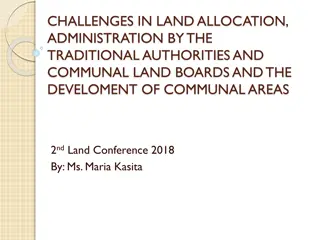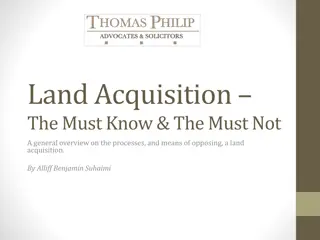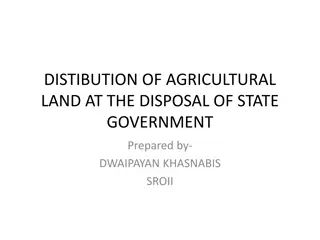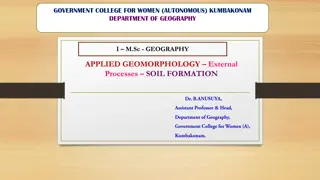Historical Evolution of Bengal: Land Formation & Cultural Development
Ancient Bengal, known as Vanga, witnessed territorial evolution from early Vedic literature to political prominence under different dynasties like Palas and Guptas. The region's history reflects a rich tapestry of cultural change, ethnic identity, and settlement pattern, especially during Buddhist periods.
Download Presentation

Please find below an Image/Link to download the presentation.
The content on the website is provided AS IS for your information and personal use only. It may not be sold, licensed, or shared on other websites without obtaining consent from the author. Download presentation by click this link. If you encounter any issues during the download, it is possible that the publisher has removed the file from their server.
E N D
Presentation Transcript
Presentation on History of Bengal Land Formation Early Settlement Identity Ethnicity Development
Ancient Bengal Geography conveys a chronological sense of space, location and distance, but also reveals information on territorial evolution of a nation or state Used to be called Bangala, and later Bengal First reference to Bengal has been made in the early Vedic literature Known as Vanga an area covering the whole of the lower Ganges. The neighboring political and geographical units were known as Pundra, Prachya, Videha and Kirata. During the advance of the Aryans into the northwestern India (c 1500- 800 BC), most of Vanga was under forest and was inhabited.
Bengal during Buddhist Period Prachya, a macro-region merged into a number of political units, such as, Anga, Pundra, Sumha and notably Vanga, with a new development to political prominence of Pragjyotisa in the northeast along the Lohita river. A major part of Anga, Pundra and a part of Vanga was conquered by Magadha (545 BC). During the subsequent Mauryan period (321 - 181 BC), Vanga further gained geopolitical prominence over Anga, Pundra and Pragjyotisa.
Bengal During Shasanka c 500 to 700 AD Gained enormous political prominence in the south-west of Bengal (present day Orissa) and Varmans in the north-east of Bengal (Kamarupa in Assam) Bhaskarvarman of Kamrup feared the expansionist policies of Shashanka when the latter intruded into the Gaudas. Bhaskarvarman made alliance with Harsavardhana and ruled over northern India. This period was associated with cultural change caused by the spread of Buddhism in Bengal and the political eminence of the Guptas in north India. Bengal during P
Bengal during Pala This period (c 700 to 925 AD) witnessed the highest development of Buddhism and Buddhist culture across Asia and also in Bengal. As seen in the previous periods, the various kingdoms in Bengal have had a series of ups and downs because of the political rivalries and local wars that continued up to the later Gupta period Gopala, founder of the Pala dynasty, was elected by the local chieftains as the king of Vanga or Bangala in 756 AD He consolidated his position in Vanga that extended as far as western Magadha. It included harikela and Pundravardhana in the north, Kamarupa in the east and Utkala in the southwest.
Bengal during Sena (1000 -1200 AD) The Palas ruled over Bangala with intermittent feuds with Chandellas, Colas, Chalukyas and Kalachuris till the rule of Mahipala (995-1043) and Ramapala (1082-1124). The last days of the Palas were characterised by internal revolt and factionalism that weakened this vast kingdom. Senas, strict Brahmanic Hinduism, established control over much of Magadha, Vanga, Pundra and Samatata, and ruled this region during the period from 1000 to 1200 AD. The flourishing Buddhism in Bengal suffered virtual destruction in the hands of the Senas.
IDENTITY AND ETHNICITY DEVELOPMENT By 500 BCE, Bengal region witnessed the rise of several powerful states against whom the Aryan states of the Upper Ganges launched military campaigns Krishna raised his status as a warrior by defeating the kings of Vangas and Pundras. Bhimsena, subdued all the local princes of Bengal. All these epic stories are indicative of the change of impression of the Aryans about the peoples of Bengal and also of the beginning of the influence of the Aryan culture on the indigenous societies. The Aryans occupying the upper Ganges Basin came in contact with a population group whom they called the 'Nishadas', meaning wild people. Presumably, they were the aborigines of the area now forming Bangladesh. IDENTITY AND
IDENTITY AND ETHNICITY DEVELOPMENT A number of population groups were living in Bengal, the most notable being the pundra, the Vanga and the Suhma. The Pundra and the Vanga were the earliest ancestors of the people settling in Bengal. The rivers also offered fertile soil for farming and were the main means of communication, facilitating trade and commerce. The major rivers and their sub-basins separated different population groups, and thereby the human settlement units from each other
IDENTITY AND ETHNICITY DEVELOPMENT Human settlement in Bengal can be traced back 20,000 years. Remnants of Copper Age settlements date back 4,300 years. Archaeological evidence confirms that by the second millennium BCE, rice-cultivating communities inhabited the region. By the 11th century BCE, the people of the area lived in systemically-aligned housing, used human cemeteries and manufactured copper ornaments and fine black and red pottery. The Ganges, Brahmaputra and Meghna rivers were natural arteries for communication and transportation. Estuaries on the Bay of Bengal allowed for maritime trade. The early Iron Age saw the development of metal weaponry, coinage, permanent field agriculture and irrigation. From 600 BCE, the second wave of urbanization engulfed the north Indian subcontinent, as part of the Northern Black Polished Ware culture.
THANK YOU ABU TOYAB SK



